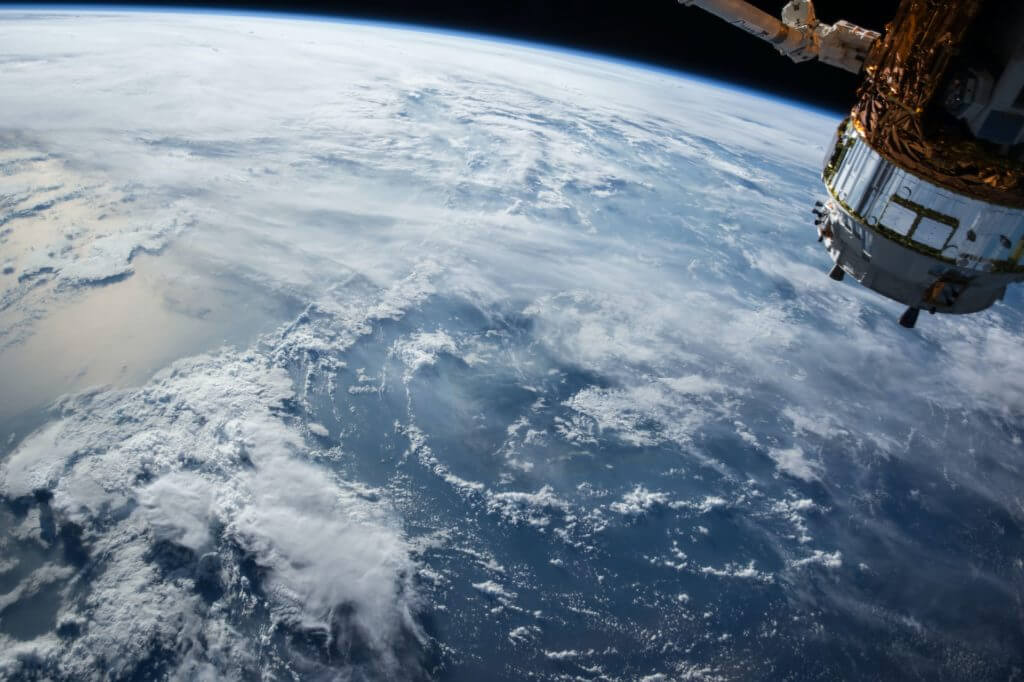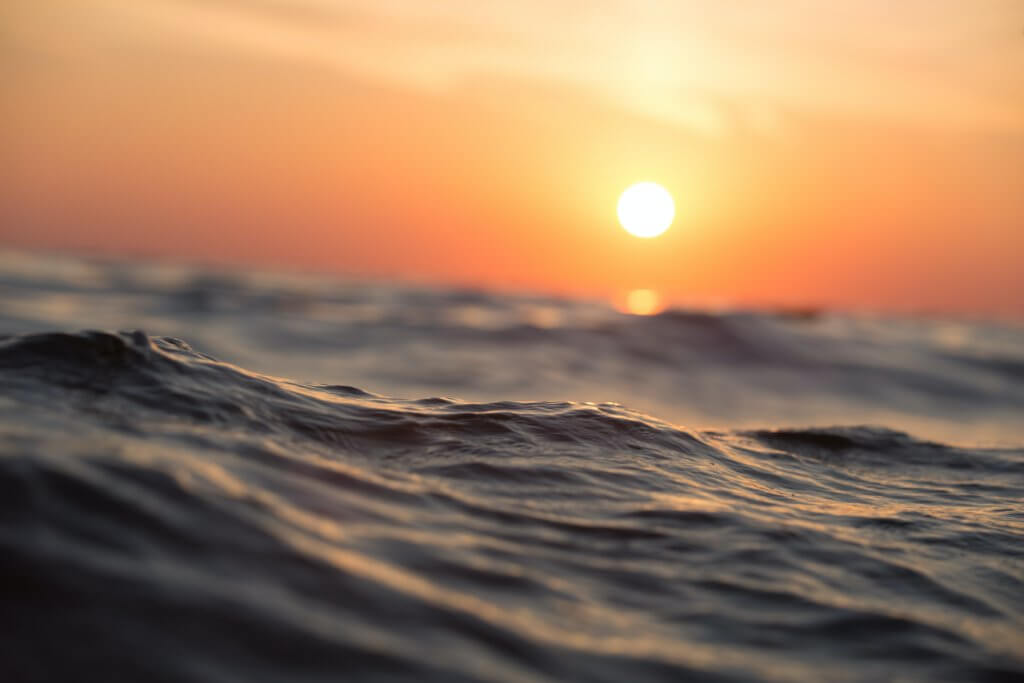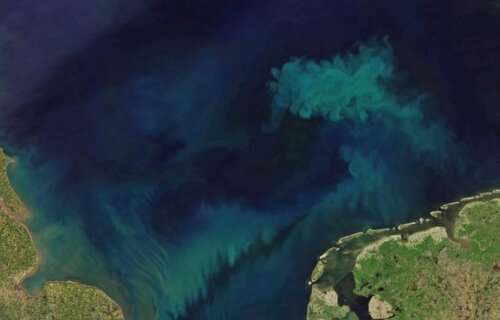CAMBRIDGE, Mass. — Earth’s oceans are losing their famous blue color, and scientists say man-made climate change is to blame. A new study has detected “significant” changes in the color of seas around the world over the past 20 years that cannot be explained by natural, year-to-year variations alone.
Although the color shifts are subtle and difficult for the human eye to pick up, researchers from the Massachusetts Institute of Technology say they’re occurring in over 56 percent of the world’s oceans — an expanse larger than the total area of land on Earth.
Specifically, the research team found tropical ocean regions near the equator have become steadily greener over time. The shift in water color indicates that marine ecosystems must also be changing, as the color of the ocean is a literal reflection of the living beings and other materials in the sea.
The new study cannot say exactly how these ecosystems are changing, but researchers are fairly certain of one thing: human activity contributing to climate change is likely the driving factor.
“I’ve been running simulations that have been telling me for years that these changes in ocean color are going to happen,” says study co-author Stephanie Dutkiewicz, senior research scientist in MIT’s Department of Earth, Atmospheric and Planetary Sciences and the Center for Global Change Science, in a media release. “To actually see it happening for real is not surprising, but frightening. And these changes are consistent with man-induced changes to our climate.”
“This gives additional evidence of how human activities are affecting life on Earth over a huge spatial extent,” adds lead author B. B. Cael PhD ’19 of the United Kingdom’s National Oceanography Center in Southampton. “It’s another way that humans are affecting the biosphere.”

The MIT team explains that the ocean’s color is a visual product of whatever resides in its upper layers. Generally, waters that have a deep blue color reflect very little life. Meanwhile, greener waters indicate the presence of ecosystems, and mainly phytoplankton — plant-like microbes which are abundant in the upper levels of the ocean. They contain the green pigment chlorophyll, which we then see as green water.
This green pigment helps plankton harvest sunlight. The microbes use it to capture carbon dioxide from the atmosphere and convert it into sugars. Dutkiewicz notes that phytoplankton are the foundation of the marine food web, which sustains bigger and more complex organisms — from krill to fish and seabirds, to marine mammals like whales.
Phytoplankton also serve as a powerful “muscle” in the ocean’s ability to capture and store carbon dioxide. Scientists are now monitoring phytoplankton across ocean surfaces to see how these essential communities might respond to climate change. To do so, they’re tracking changes in chlorophyll, based on the ratio of how much blue versus green light the ocean surface is reflecting. Today, scientists can even take these readings from space.

A decade ago, Professor Stephanie Henson, who is a co-author of the current study, notes that if scientists were tracking chlorophyll alone, it would take at least 30 years of continuous monitoring to detect any trend that was coming directly from climate change. The large, natural variations in chlorophyll from year to year would “overwhelm” any anthropogenic influence on chlorophyll concentrations.
In 2019, Dutkiewicz and researchers published a separate paper, using a new model, showing that the natural variation in other ocean colors is much smaller compared to that of chlorophyll. Therefore, any sign of climate change-driven changes should be easier to discover over the smaller, normal variations in ocean color. The team predicted that these changes should be apparent within 20, rather than 30 years of monitoring.
“So I thought, doesn’t it make sense to look for a trend in all these other colors, rather than in chlorophyll alone?” Cael says. “It’s worth looking at the whole spectrum, rather than just trying to estimate one number from bits of the spectrum.”
In the current study, Cael and the team analyzed measurements of ocean color coming from the MRI Spectroradiometer (MODIS) aboard the Aqua satellite, which is monitoring ocean color for 21 years. MODIS takes measurements in seven visible wavelengths, including the two colors researchers traditionally use to estimate chlorophyll.
The differences in color that the satellite picks up are too small for the human eye to see. For most people, Earth’s oceans still look very blue to the naked eye, although the true color may contain a mix of wavelengths, from blue to green and even red.

Cael conducted an analysis using all seven ocean colors measured by the satellite from 2002 to 2022. The researcher first looked at how much the seven colors changed from region to region during a given year. That gave him an idea of their natural variations.
Cael then zoomed out to see how the annual variations in ocean color changed over the longer stretch of two decades. The results turned up a clear trend, above the normal year-to-year variability.
To see whether the trend is related to climate change, Cael then looked to Dutkiewicz’s model from 2019. That model simulated the Earth’s oceans under two scenarios: one with the addition of greenhouse gases, and the other without it.
The greenhouse-gas model predicted that a significant trend should show up within 20 years. That trend would cause changes to water color in roughly half of the world’s surface oceans — almost exactly what Cael found in his analysis of real-world satellite data.
“This suggests that the trends we observe are not a random variation in the Earth system,” Cael says. “This is consistent with anthropogenic climate change.”
“The color of the oceans has changed,” Dutkiewicz concludes. “And we can’t say how. But we can say that changes in color reflect changes in plankton communities, that will impact everything that feeds on plankton. It will also change how much the ocean will take up carbon, because different types of plankton have different abilities to do that. So, we hope people take this seriously. It’s not only models that are predicting these changes will happen. We can now see it happening, and the ocean is changing.”
The findings are published in the journal Nature.
You might also be interested in:
- Gigantic ‘warming pool’ severely disrupting marine life discovered in the Pacific Ocean
- By 2100, climate change could destroy the ocean’s mysterious ‘twilight zone’
- Global warming: Here’s where climate change could lead to record-setting heatwaves soon
South West News Service writer Stephen Beech contributed to this report.

